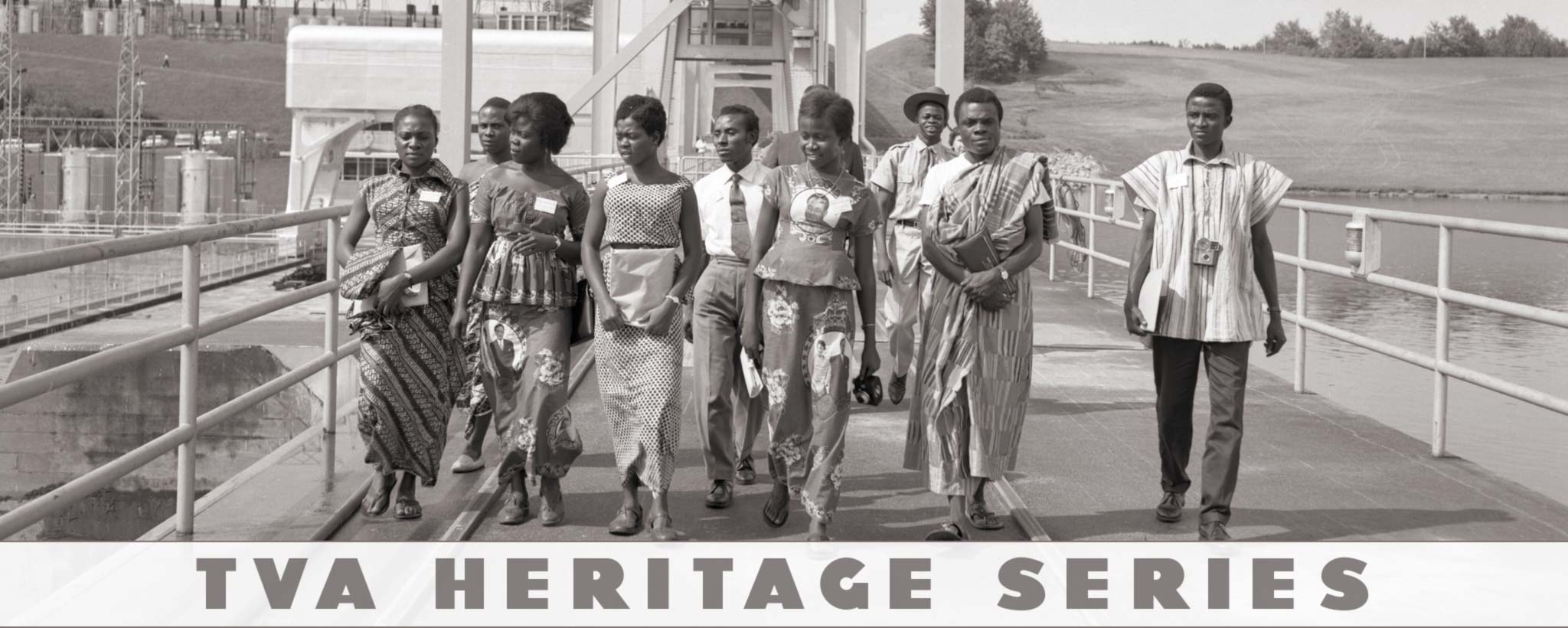
Classroom for the World
TVA's model of integrated resource development has historically been one shared with developing countries around the globe. And it still is today.
In 1966, Kouassi Lambert Konan—“Mr Electricity” as he was known in the Ivory Coast—visited TVA for new ideas. The 36-year-old electrical engineer was on a visit to the United States to observe the ways TVA was raising the standard of living in rural areas. Konan, along with his interpreter and a TVA agricultural engineer, travelled to Rogersville, Tenn. There he visited John Sevier Steam Plant, viewed the farms in the community and met with Holston Electric Cooperative. While he gathered statics on steam plant operation, he noted the similarities between his homeland and the Valley: “As all countries in Africa, the Ivory Coast is predominantly agricultural. By observing TVA, I may find certain techniques and methods for producing electricity which would be adaptable in the Ivory Coast.”
Konan’s visit is just one example of the thousands of international visitors TVA has entertained over the years. In fact, in February 1961, President Kennedy remarked that he wanted “to share the great experience of the TVA with other nations with the gap between resources and resources development.” He went on to direct the agency “to study ways in which the lessons it has learned in the Tennessee Valley may be exported abroad and applied to our great objective of human enhancement.”
Global Destination
Certainly, TVA had entertained foreign visitors long before 1961. In fact, from our earliest days, TVA was a destination for many people from abroad. Our approach to integrated resource management—river development, agricultural development and concern for improving quality of life—was intriguing to people of many countries. Officials from Mexico, South American and China visited in the 1940s. A large number of engineers with the National Resources Commission of China visited the Valley in July 1943 to confer with TVA officials and engineers on water control and regional development.
During the post-WWII era, thousands of people were coming to the Tennessee Valley each year to see TVA in operation. more than half were from countries around the world. For record keeping purposes, TVA divided these international visitors into two groups. The first and smaller one was comprised of trainees who came to TVA for months and had the opportunity for hands-on training within the divisions in whose work they are particularly interested. The second, and numerically greater group, visited TVA for periods ranging from one day to about two weeks. Between 1947 and 1955, these general study visitors almost tripled from 668 to over 1,700, and the numbers kept growing.
TVA quickly became overwhelmed by the demand. Staff conducted internal reviews regarding the number of foreign visitors, trainees and requests for technical assistance, but it was not until Kennedy’s call in 1961 that TVA took a more formal approach to handling the numerous requests received. In a report to the President, “TVA Directions—Past and Present,” the TVA Board outlined its plan to handle these applications. The Board noted that “throughout the world, people look to TVA as a symbol of an effective, democratic approach to the problems of an undeveloped area.” The “international interest in TVA offers an opportunity for more effective training of the persons who visit our agency. We are now exploring . . . methods by which our experience can be communicated in a more thorough and useful way.” The report suggested establishing a course in TVA techniques and programs.
Almost immediately plans were initiated with the cooperation of the U.S. Department of State to establish an experimental TVA Resources Development Seminar which would provide an opportunity for organized study by representatives of foreign countries.
International Agenda
This first seminar included lectures and discussions with top-ranking TVA personnel, a Valley-wide field trip in which the various projects and activities were inspected and studied, and a final evaluation period. The course proved highly successful and was repeated periodically as an effort to increase TVA’s—and the U.S. Government’s—contribution of assistance to underdeveloped countries. In July 1963, The Decatur Daily ran the story “Foreign Group Lauds Valley.” The paper reported that TVA was teaching its Sixth Resources Development Seminar with thirty-two representatives from nine countries. A Yugoslavian electrical engineer commented that “Yugoslavia today is now in the same predicament that the Tennessee Valley was thirty years ago. One of our musts is how to develop industry.”
At the peak of TVA’s international assistance efforts, the Chattanooga Times editorialized about TVA’s work, predicting that “our Valley will gain added stature as the classroom for the industrial leaders of the free and emerging nations of the world.” For the greater part of our history, TVA was known as a leader in both resource development and foreign technical assistance.
We continue to carry this mantle, but on a much smaller scale. 60 officials from 17 countries visited TVA last year, and recently TVA hosted a contingent from the Mekong Delta, sharing information about our history and integrated resource management. By carrying out our day-to-day responsibilities for the development of the Valley region—providing low-cost, clean and reliable energy, providing stewardship of our natural and cultural resources, and providing opportunities for economic development—TVA continues to be an example of all that can be achieved in a region to improve the quality of life. We continue proudly to be a classroom of the world.